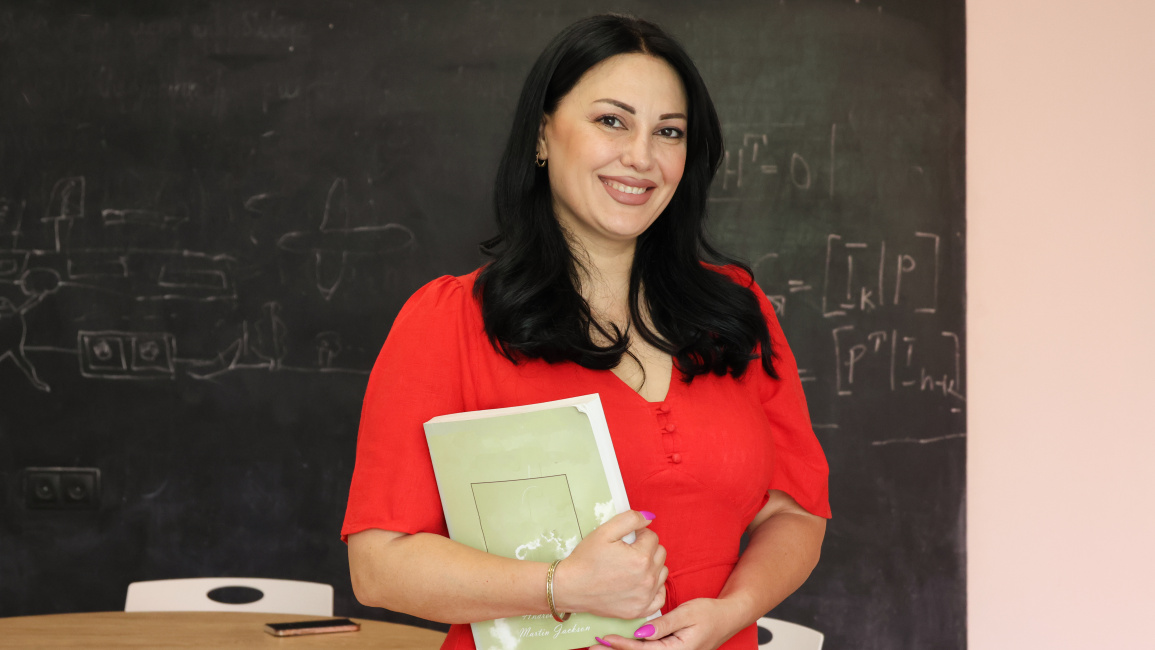June 25, 2025 | 11:55
Society
Research
Publications and scientific journals
Promoting lesser-known tourist destinations and branding cities: Prerequisites for boosting tourism
Inbound tourism plays a significant role in the balanced development of Armenia’s provinces. Associate Professor Marine Gevorgyan from Yerevan State University notes that promoting tourism in certain provinces will help address the gaps caused by emigration and unemployment. She emphasizes that Armenia has numerous notable sites that remain off the main tourist routes and require wider promotion, while cities need strategic branding.

Associate Professor Marine Gevorgyan from the Chair of Armenian History at YSU, in collaboration with Associate Professor Gayane Tovmasyan from the Chair of Theology and Armenian Church History and researcher at Amberd Research Center of the Armenian State University of Economics, has co-authored a scientific article titled "Evaluating the Role of Sustainable Tourism in Regional Development: Evidence from Armenia." The article was published in the Spanish journal "Regional and Sectoral Economic Studies."
Marine Gevorgyan emphasizes that the preparation of the article can be regarded as a successful interdisciplinary collaboration between a historian and an economist. "A significant layer of tourism pertains to historical and cultural heritage, while another layer involves economics—figures and statistics. In this article, we conducted historical-critical and comparative analyses, using certain economic methods including macro- and micro-level analysis," she explained.

Although the UN’s 17 Sustainable Development Goals do not address sustainable development and tourism directly, they do include indirect references to them, which is why Marine Gevorgyan notes the following: "In the article, we presented historical and cultural heritage sites and resources across Armenia's ten provinces. While some of these are already part of inbound tourism routes, many others remain completely excluded, therefore, these sites need to be promoted and included in tourism routes," stated the associate professor, bringing examples such as Artik–Pemzashen–Sarnaghbyur–Lanjik, Horom–Haritsh–Mantash Reservoir, and Gyumri–Akhuryan–Karnut–Jajur–Jajur Pass in Shirak Province; Nor Kharberd–Dimitrov–Artashat–Khor Virap, Dashtakar–Urcadzor–Khosrov Forest State Reserve, and Yerasakh–Zangakatun in Ararat Province; Dilijan–Gosh–Aghavnavank–Khachardzan–Tshermakavan–Geghatap, and Ijevan–Lusahovit–Aygehovit–Vazashen in Tavush Province.
"We presented the socioeconomic indicators of the provinces, highlighting their strengths and weaknesses that either contribute to or hinder tourism development. Issues related to employment and education have been highlighted, along with how local self-government bodies, by making informed use of historical and cultural heritage, can engage people in the tourism market through education," she added.
When asked which Armenian provinces have well-developed tourism and where there is a need for growth, Marine Gevorgyan responded: "Our analysis revealed that all ten provinces of Armenia are rich in historical, cultural, and natural monuments, providing potential for various forms of tourism—adventure, health and wellness, and gastronomic tourism. The tourism development strategy for Armenia’s Southern Corridor also allows for a focus on wine tourism, especially in Vayots Dzor, Ararat, and Armavir Provinces. Religious and pilgrimage tourism is more developed in Gegharkunik, Armavir, and Ararat Provinces. However, our quantitative analysis showed declines in indicators in Vayots Dzor and Kotayk, which we attributed to the consequences of the 2020 war and the COVID-19 pandemic, since the data used was from 2021."
Marine Gevorgyan further emphasized that the article outlines the challenges impeding tourism development and provides relevant recommendations: "We face problems with tourism statistics—for instance, there is a lack of data regarding entries and visitor numbers at historical and cultural monuments, since no statistical tracking exists. Only museums can provide visitor counts based on ticket sales. Additionally, there are issues with signage and transportation. For travelers journeying alone, the facilities in some provinces are underdeveloped."
The authors suggest that each province should establish its own tourism brand and that promotional campaigns be regularly conducted via media platforms. "Thus far, only one city, Gyumri, has undergone branding—in 2017. In that case, Gyumri’s character as a city of crafts, arts, humor, and heroes was highlighted. Each letter in the city’s name was associated with a defining characteristic. A similar approach could be applied, for instance, in Vayots Dzor—focusing on religious tourism due to its medieval architectural landmarks like the Noravank monastic complex, or on the unique endemic Areni grape used for winemaking."
The recommendations outlined in the article also advocate for the development of province-specific strategies for sustainable tourism. According to the author, tourism development strategies created since 2017 have largely remained theoretical.
"Tourism can serve as a tool for generating financial flows in provinces struggling with emigration and employment issues. Thus, by using tourism to fill these gaps, we can promote balanced territorial development across Armenia’s provinces," concluded Marine Gevorgyan, adding that the article is valuable not only for the academic community but also for local government bodies, who have expressed readiness to collaborate in promoting tourism.

